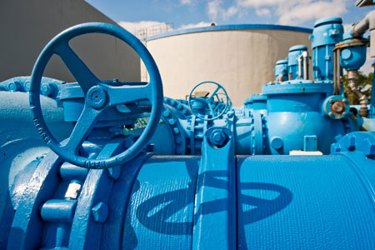Which Is Better For Water Disinfection, Sodium Hypochlorite Or Chlorine Gas?

Chlorine has been used to disinfect water in the U.S. since the early 1900s, and it remains the most frequently used water and wastewater disinfectant worldwide due to its low cost and effectiveness at deactivating a wide range of pathogens.
The two most common chlorine products for these applications are chlorine gas (Cl2) and sodium hypochlorite (NaOCl), a.k.a. bleach. For the most part, both chlorine compositions function the same way, in that they dissolve in water to form free chlorine in the form of hypochlorous acid (HOCl) and hypochlorite ion (OCl−). Treatment plants target the same parts per million of free chlorine regardless of which chlorine source is used.
Despite this, they are two very different products. Choosing which chlorine chemical to use is an important decision among water and wastewater managers, and requires balancing the overall costs, safety procedures, and more.
Get unlimited access to:
Enter your credentials below to log in. Not yet a member of Water Online? Subscribe today.
